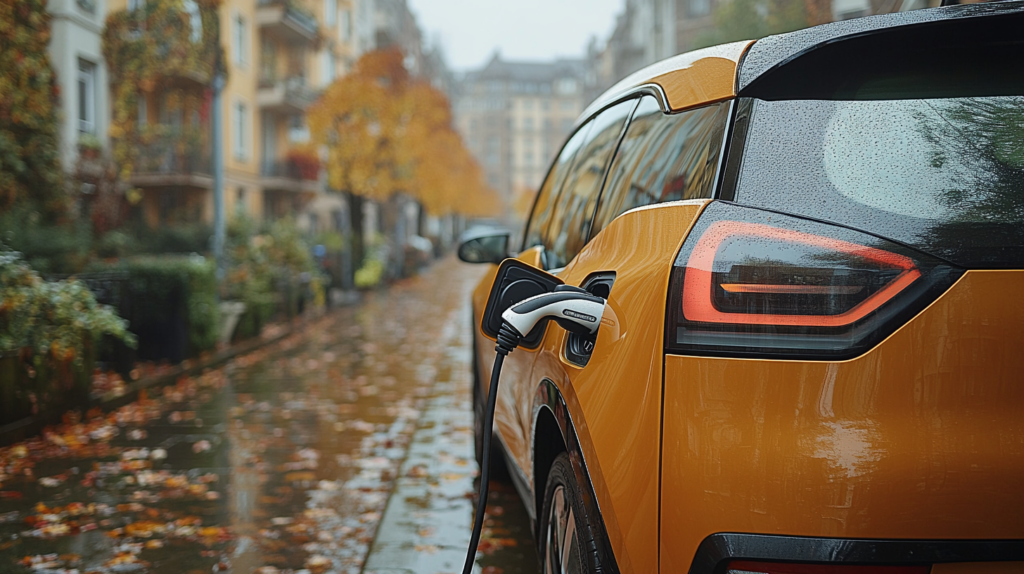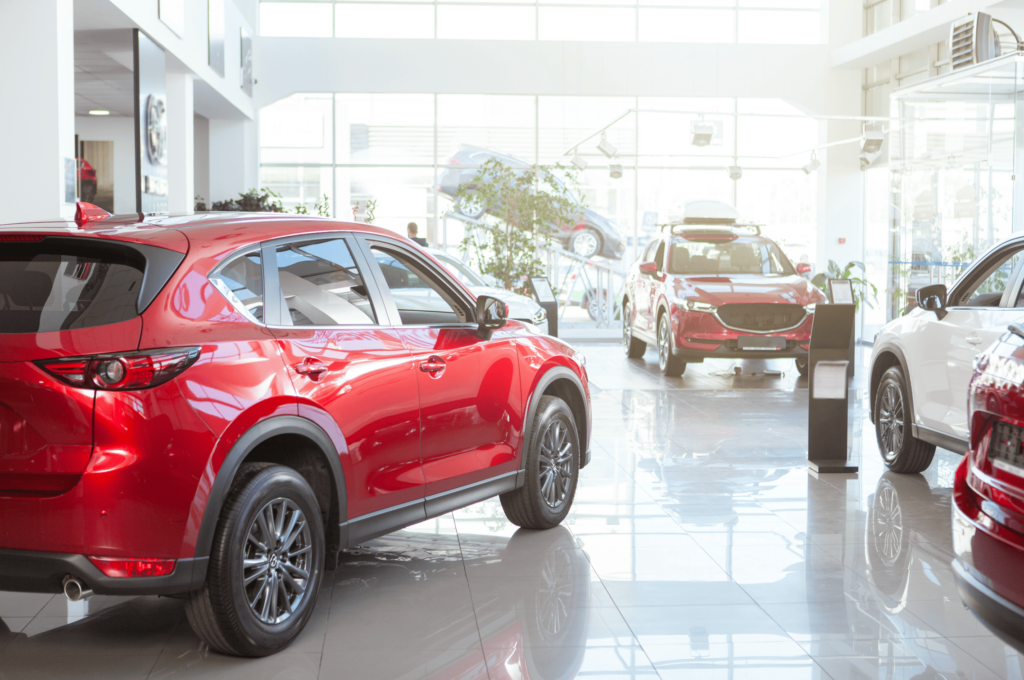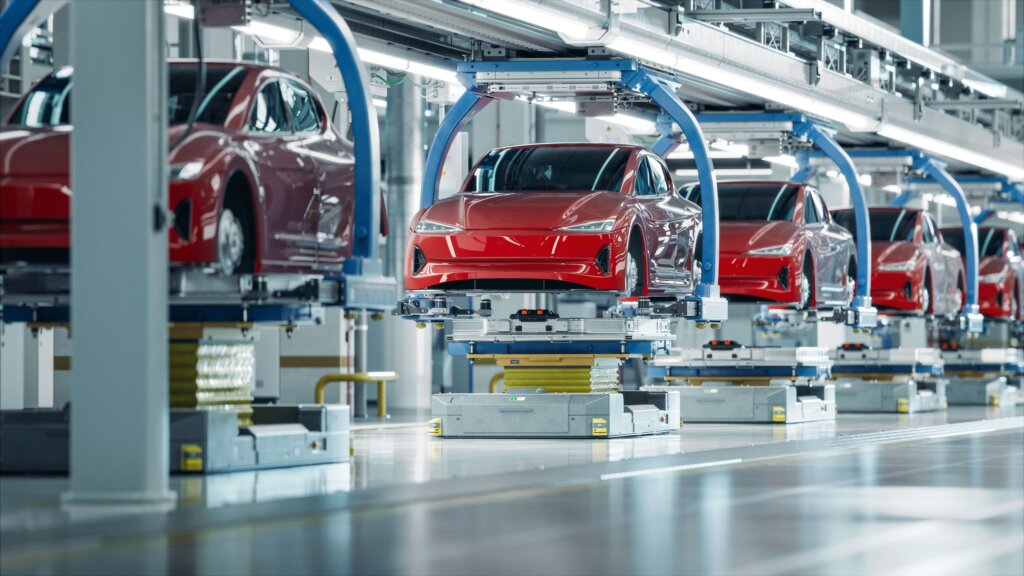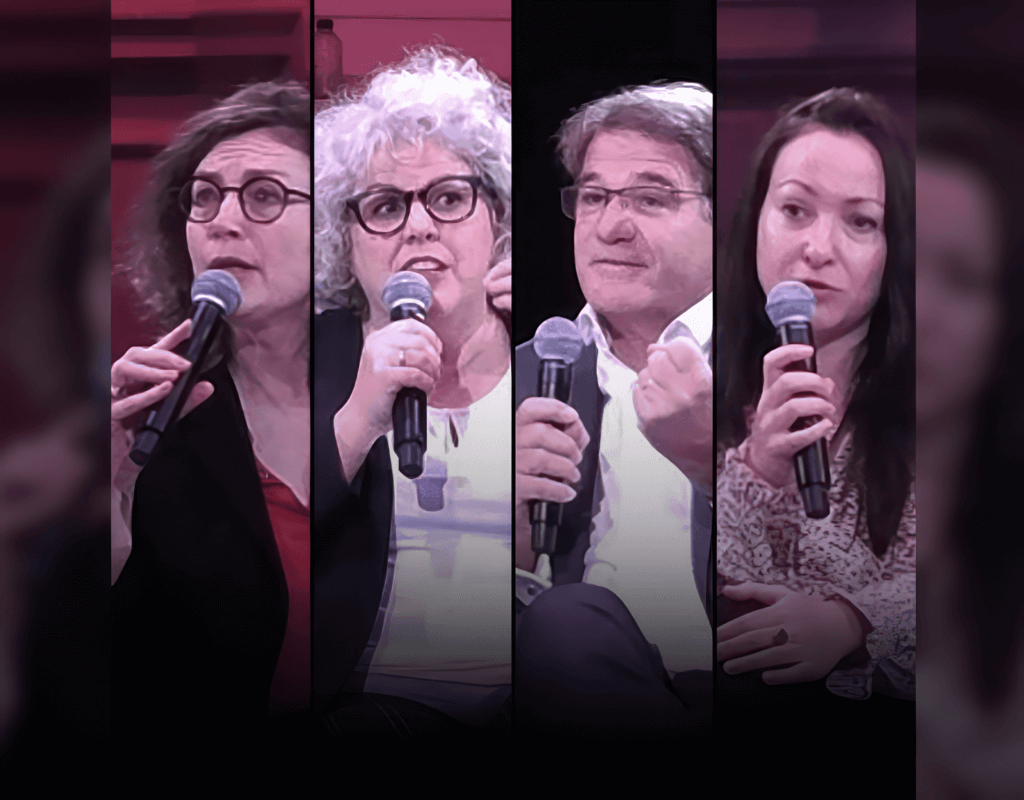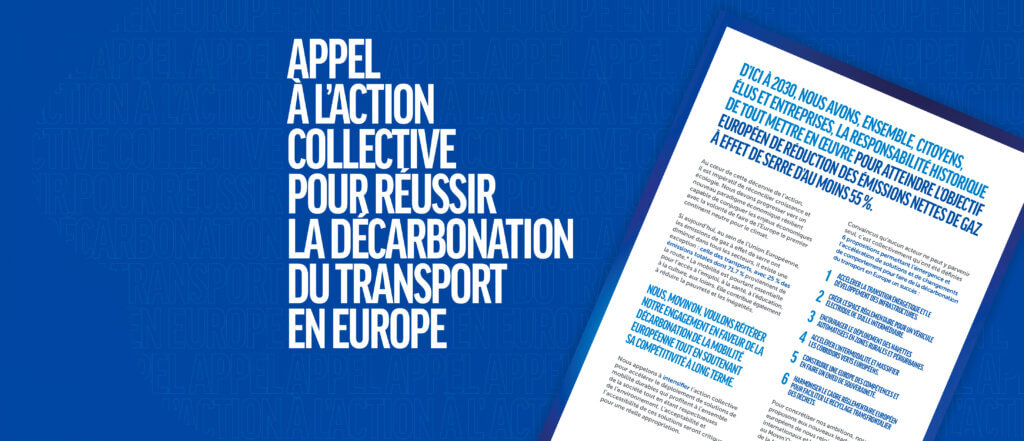New U.S. Emissions Standards Ease Pressure on Auto Industry
The U.S. Environmental Protection Agency this week announced final national pollution standards for passenger cars, light-duty trucks, and medium-duty vehicles for model years 2027 through 2032 and beyond – standards that a top auto industry spokesman calls “a stretch goal.”
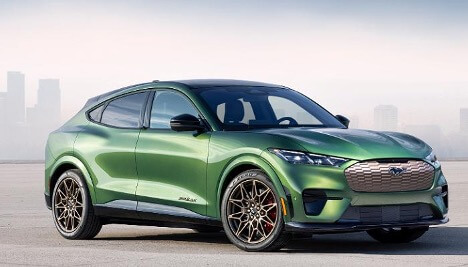
The U.S. Environmental Protection Agency this week announced final national pollution standards for passenger cars, light-duty trucks, and medium-duty vehicles for model years 2027 through 2032 and beyond – standards that a top auto industry spokesman calls “a stretch goal.”
After an exhaustive 11 month process of public consultation, EPA is finalizing the same standard the agency originally proposed for model year 2032, while allowing additional time for the auto sector to scale up clean vehicle manufacturing supply chains in the first three years covered by the final rule.
“Let me be clear. Our final rule delivers the same, if not more, pollution reduction than we set out in our proposal,” EPA Administrator Michael Regan told reporters, announcing the final rule on March 20, 2024 in Washington, D.C.
“FOLKS, THESE NEW STANDARDS ARE SO IMPORTANT FOR PUBLIC HEALTH, FOR AMERICAN JOBS, FOR OUR ECONOMY AND FOR OUR PLANET. IN ADDITION TO CARBON POLLUTION, THE FINAL STANDARDS ALSO WILL REDUCE OTHER SERIOUS AIR POLLUTION THAT CONTRIBUTES TO HEART ATTACKS, RESPIRATORY ILLNESSES, AGGRAVATED ASTHMA AND DECREASED LUNG FUNCTION.” – Michael S. Regan, Administrator, U.S. Environmental Protection Agency
In compliance calculations, this final rule revises the treatment of upstream emissions linked with zero-emission vehicles and reduced-emission plug-in hybrid electrics. Upstream emissions originate from production of these vehicles, while downstream emissions come from their use and disposal.
In addition, EPA is establishing new standards to control refueling emissions from medium-duty vehicles, as well as battery durability and warranty requirements for light-duty and medium-duty electric and plug-in hybrid electrics.
Compared to the existing model year 2026 standards, the final model year 2032 standards “represent a nearly 50 percent reduction in projected fleet average greenhouse gas emissions levels for light-duty vehicles and 44 percent reductions for medium-duty vehicles,” the EPA says.
Climate Solutions That Save Motorists Money
In 2023, Americans purchased a record 1.2 million electric vehicles, but even so, the transportation sector is the largest U.S. source of greenhouse gas emissions, representing 29 percent of the nation’s total greenhouse gas emissions.
Within the transportation sector, light-duty vehicles such as passenger cars emit the most greenhouse gases, 58 percent, accounting for 16.5 percent of total U.S. greenhouse gas emissions, the EPA states in this final rule.
The 2027-2032 standards will avoid more than seven billion tons of carbon emissions and provide nearly US$100 billion of annual net benefits to society. EPA calculates there will be $13 billion of public health benefits each year due to improved air quality.
Drivers can expect a total of $62 billion in reduced annual fuel costs, maintenance and repair costs.
Once fully phased in, in 2032, the new standards are expected to save the average American driver an estimated $6,000 in reduced fuel and maintenance over the life of a vehicle.
“From plug-in hybrids to fuel cells to fully electric, drivers have more choices today. Since 2021, sales of these vehicles have quadrupled and prices continue to come down. This growth means jobs, and it means we are moving faster and faster to take on the climate crisis,” Ali Zaidi, President Biden’s national climate advisor, told reporters.
Democrats in Congress support the new standards, among them Senator Debbie Stabenow of Michigan, a state whose economy is founded on the auto industry.
“I’ve always said Michigan automakers are the best in the world. And this is their moment,” Stabenow said. “I appreciate EPA’s commitment to engaging with our automakers and autoworkers to develop an ambitious but achievable final rule. It represents an opportunity for union workers to continue to build the vehicles of the future right here in the U.S. and tackle the climate crisis.”
Timing the Transition
EPA is finalizing this rule as sales of cleaner vehicles, including plug-in hybrid and fully electric vehicles, hit record highs in 2023, but preliminary year-to-date reports from automakers for 2024 show electric vehicle sales slowing somewhat.
Still, EPA projects that U.S. auto manufacturing employment will boom in response to these final standards, satisfying the broader Biden-Harris Administration commitment to create good-paying, union jobs leading to a clean vehicle future.
“The future is electric,” said John Bozzella, president and CEO, Alliance for Automotive Innovation, an industry group representing automakers and parts suppliers large and small, such as Ford, General Motors and Stellantis, Subaru, Toyota, Honda, and Porsche.
“Automakers are committed to the EV transition – investing enormous amounts of capital and building cutting edge battery electric vehicles, plug-in hybrids, traditional hybrids and fuel cell vehicles that drive efficiency and convert petroleum miles to electric miles,” Bozzella said.
“Consumers have tons of choices. But pace matters,” he emphasized. “Moderating the pace of EV adoption in 2027, 2028, 2029 and 2030 was the right call because it prioritizes more reasonable electrification targets in the next few (very critical) years of the EV transition.”
“THESE ADJUSTED EV TARGETS – STILL A STRETCH GOAL – SHOULD GIVE THE MARKET AND SUPPLY CHAINS A CHANCE TO CATCH UP. IT BUYS SOME TIME FOR MORE PUBLIC CHARGING TO COME ONLINE, AND THE INDSTRIAL INCENTIVES AND POLICIES OF THE INFLATION REDUCTION ACT TO DO THEIR THING. AND THE BIG ONE? THE RULES ARE MINDFUL OF THE IMPORTANCE OF CHOICE TO DRIVES AND PRESERVES THEIR ABILITY TO CHOOSE THE VEHICLE THAT’S RIGHT FOR THEM.” – John Bozella, president and CEO, Alliance for Automotive Innovation
The United Automobile Workers supports the new standards, saying, “The EPA has made significant progress on its final greenhouse gas emissions rule for light-duty vehicles. By taking seriously the concerns of workers and communities, the EPA has come a long way to create a more feasible emissions rule that protects workers building ICE vehicles, while providing a path forward for automakers to implement the full range of automotive technologies to reduce emissions.”
“This is a day to celebrate American achievement. The step EPA is taking today will slash climate pollution and air pollution,” said Amanda Leland, executive director of the nonprofit Environmental Defense Fund. “It will bring more jobs for workers, more choices and more savings for consumers, and a healthier future for our children.”
“The U.S. has leapt forward in the global race to invest in clean vehicles, with $188 billion and nearly 200,000 jobs on the way. Jobs in communities across the country, in places like Michigan, Nevada, and Kentucky. These clean car standards will help supercharge economic expansion and make America stronger,” Leland predicted.
Dan Lashof, U.S. director with the World Resources Institute, is supportive, too. “These new standards will speed the adoption of cleaner, more efficient vehicles across America’s roads and go a long way to ensuring that all Americans can access the benefits of electric vehicles,” he said. “The standards will have a direct impact on Americans’ lives, improving air quality, cutting people’s transportation costs and reducing climate pollution.”
“We look forward to the final standards for heavy duty vehicles later this spring and urge federal and state policymakers to defend these standards from attack while continuing to advance additional policies to cut vehicle pollution and make the benefits of electric vehicles available to all Americans,” Lashof said.
Albert Gore III, executive director of the Zero Emission Transportation Association (ZETA), made an optimistic comment, “These standards make clear that securing America’s global leadership in manufacturing and securing a better future are 100 percent aligned. We have everything we need today to meet and exceed this standard, and that means more of the vehicles sold in America will be made in America.”
Gore is the son of former U.S. Vice President Al Gore (1993 to 2001) and co-winner of the 2007 Nobel Peace Prize for his climate campaigning. Gore III worked for Tesla for seven years in public policy and business development, and current ZETA members include Tesla, Lucid Motors, Rivian, LG, Waymo, Uber, Panasonic and Albemarle.
Critics Say New Rule Falls Short
But not everyone is happy with the EPA’s final 2027-2032 emissions rule. Some environmental groups see shortcomings in the new standards.
“Under the EPA’s updated clean car standards, more vehicle pollution will be avoided and more lives saved than would have been under current regulations. That is important to celebrate. But this rule falls far short of what is needed to protect public health and our planet. EPA is giving automakers a pass to continue producing polluting vehicles,” Chelsea Hodgkins, senior policy advocate with the climate program of the nonprofit group Public Citizen.
Public Citizen released a new report last week, “Stuck in Neutral,” which found that since 2019, 10 automakers and industry groups have pumped more than $183 million into lobbying efforts in Washington, D.C. to ease federal emissions requirements.
The largest spender was General Motors, with $48.6 million in lobbying, followed by Toyota at $31 million, and Ford at nearly $21 million since 2019. The Alliance for Automotive Innovation, the industry association that represents major automakers, was the fourth-highest spender on vehicle-related lobbying from 2019-2023.
The top five automakers by U.S. sales – General Motors, Ford, Stellantis, Toyota, and Honda – have claimed that EPA’s stronger emission standards would hurt the industry’s bottom line.
The Public Citizen report complains that these same five automakers have profited from marketing and selling larger SUVs and trucks, earning nearly $293 billion in combined profits since 2018, paid shareholders nearly $78 billion in dividends, and repurchased nearly $41 billion of their own stock.
“Automakers seem to have no shame,” said Hodgkins. “For decades, they’ve chosen to drag their feet on improving their cars to the maximum extent possible and instead chose to follow in Big Oil’s footsteps, to spread public misinformation and dissuade policymakers from taking strong action.”
“These rules will save consumers money, protect the health of millions, and give us a shot at a liveable future. Big Auto’s multi-million dollar lobbying efforts and corrupting influence are a direct attack on this progress and our democracy,” Hodgkins argued.
Rev. Susan Hendershot, executive director of the California-based nonprofit Interfaith Power & Light, is another critic. “People of faith and conscience have been eagerly awaiting the newest set of light-duty vehicle emissions standards and are grateful to see these rules advance us in the right direction. However, the rules do not provide the stringency required to address the emergent climate and public health crises in our country. We have a moral opportunity as a nation, and a sacred task as people of faith, to care for our climate, to advance environmental justice, and to leave a safe and thriving world for current and future generations.”
Susan Stephenson, executive director of California Interfaith Power & Light, said, “With climate change ravaging our communities with heat waves, fires, and floods, the time for half measures has passed. We need strong clean car standards to cut pollution from our vehicles now. As people of faith called to love our neighbors and protect all of Creation, we are deeply concerned about the impacts of global warming and the risk it poses to the most vulnerable among us. If the federal government won’t do it, states like California must step up and take moral action to protect our communities and our world.”
From a different perspective, NATSO, representing America’s travel centers and truck stops, SIGMA: America’s Leading Fuel Marketers, and the National Association of Convenience Stores said in a statement, “The fastest, most efficient way to lower carbon emissions remains through technology-neutral, market-oriented, consumer-focused policies that encourage all fueling technologies to improve their respective emissions. This rule does not do that. Instead, it functions as an effective mandate for a single technology that at this point has not proven itself to be more viable than other compelling solutions.”
The EPA's Expectations
The final rule is expected to avoid 7.2 billion tons of carbon dioxide (CO2) emissions through 2055, roughly equal to four times the emissions of the entire transportation sector in 2021, the agency said.
Annually, the net benefits to society for the light- and medium-duty final rule will be $99 billion, EPA estimates.
The new standards are also expected to reduce fine particulate matter and ozone, preventing up to 2,500 premature deaths annually in 2055 as well as reducing heart attacks, respiratory and cardiovascular illnesses, aggravated asthma, and decreased lung function.
In addition, the standards are expected to reduce emissions of health-harming fine particulate matter from gasoline-powered vehicles by over 95 percent. This will improve air quality nationwide and especially for people who live near major roadways and have environmental justice concerns.
For complete information about the new rule, “Multi-Pollutant Emissions Standards for Model Years 2027 and Later Light-Duty and Medium-Duty Vehicles,” including a summary, history, fact sheets and public comments, click here.
All Movin'On news
in your mailbox
Auteur
Share
Tweets de @movinonconnect
Movin'On 2035 TODAY EP02 - Circular Economy & Competitivity
Movin’On 2035 TODAY EP01 – Fair Mobility for All https://x.com/i/broadcasts/1yNxagBrWZbGj
✨ THAT'S A WRAP!
Movin'On Summit 2024 has just concluded in Brussels!
More than 350 leaders and experts in sustainable mobility gathered to exchange ideas, collaborate, and share their vision for desirable and decarbonised mobility in Europe. Together, we explored ways to build…
🔴 Live from #MovinOnSummit2024
@AshaSumputh has just invited Denis Machuel, CEO at @AdeccoGroup and Florent Menegaux, President of the @Michelin Group & President of Movin'On
Sustainable mobility news
Discover the latest trends, analyses per theme, and our next meetings.

